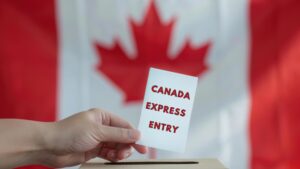What is the Best Age for Express Entry to Canada?
If you think about using the Express Entry system to immigrate to Canada, one of the first questions that most potential applicants often ask themselves is whether there is the best age for which one should apply. Since age plays a huge role in the Comprehensive Ranking System, this is not really what makes the application successful or otherwise. Knowing how your age impacts your CRS score and other factors to strengthen the application will help you improve your chances of getting an invitation to apply for permanent residence in Canada. Age Factors Under the Express Entry System The Express Entry system remains one of the most viable routes through which skilled workers can migrate into Canada, with the CRS score playing a major role in determining eligibility. Age is an important component of the CRS; candidates aged 20–29 earn maximum points. Here is a breakdown of how age affects your CRS score: Applicants aged 20–29 who apply without a spouse can earn up to 110 CRS points, which is the highest possible score for their age.Age 30-34: The maximum points achievable for age drop to 105Age 35: These points drop further to 77, and a continued drop ensues as applicants get older than this age.This could be a bit discouraging to the older applicants. However, one must keep in mind that there are quite a few other factors on which the CRS score is based. Other Important Aspects of the CRS Score While age plays a significant role, it isn’t determined by that alone. Other key elements are: Language Ability: Getting high scores on language tests like IELTS and CELPIP boosts your points drastically under the CRS system.The following factors can help maximise your CRS score: higher education, advanced degrees, and additional qualifications; relevant work experience in high-demand occupations; and including a spouse in the application for extra points in education, language, and work experience. Strategies for Applicants with Lower CRS Scores If you have a low CRS score, all is not lost. Here are a few strategies that can be used to improve one’s prospects: Improve your CRS score. Spend some time developing your language ability, getting work experience, or obtaining further education. Improvement in any of these factors will raise your CRS score. Explore PNPs: Some provinces have immigration programs that have a lower CRS score requirement. This can boost your CRS score by 600 points if you are successfully nominated by any province, thus improving your prospects of getting an ITA. Re-Apply After Improvement: In the event that your initial application gets rejected, consider re-applying after profile or CRS score improvement. Consider Other Immigration Pathways: Consider alternative pathways of immigration, such as family sponsorship, study permits, or work permits, that may eventually result in permanent residency. Conclusion: Though there is no ideal age for Express Entry into Canada, knowing the age factors on your CRS scoring and other elements that would strengthen your application will definitely help a lot. Take care of your language, education, and work experience while also finding ways to settle into permanent residence in Canada.










